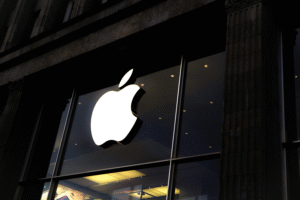
As the leaves turn golden and the nights become longer, the anticipation for Halloween grows palpable. People begin hunting for the perfect Halloween costumes, and stores start to showcase spooky decorations, and horror movies dominate your screens. It’s a time for thrills, chills, and cinematic spooks. But have you ever stopped to ponder how horror movies, an integral part of the Halloween experience, have evolved over the years?
1. Silent Era Nightmares: Where It All Began
Horror movies began in the silent era before the screams, jumps, and eerie background scores. The use of shadows, exaggerated makeup, and subtle gestures captured the audience’s attention. Movies like “Nosferatu” (1922) utilized dark imagery and gothic settings to create an atmosphere of unease. Without words, these films relied heavily on visual storytelling. Can you picture sitting in a dimly lit theater, with only the flickering images and live piano music setting the tone?
2. Technicolor Terror: The Birth of Vibrant Horrors
With the advent of sound and color, horror movies underwent a dramatic transformation. Suddenly, the monsters could speak, and the dark black-and-white world was replaced with vibrant colors. Films of the ’50s and ’60s, such as “The Birds” and “Psycho,” highlighted the shift from supernatural beings to more human-centric threats. The audience started to see monsters in ordinary people, making the horror more relatable and, in a way, more frightening. Just as children parade in colorful Halloween outfits, horror films started displaying a richer palette, only with a more sinister undertone.
3. Slasher Surge: The Age of the Anti-Hero
Come the ’70s and ’80s, a new breed of horror was born – the slasher film. Icons like Freddy Krueger and Michael Myers became household names. These characters weren’t just faceless monsters; they had backstories, motives, and distinct personalities. It’s fascinating how these villains, while terrifying, garnered a fan base of their own. Was it the allure of the forbidden, or did the audience see a twisted reflection of society’s dark side in them?
4. Psychological Horrors: Delving Deeper into the Mind
The late ’90s and the 2000s marked a notable shift towards psychological horror. Gone were the days of visible monsters and gore. Now, the true horror lay in the unseen, the unsaid. Movies like “The Sixth Sense” and “The Others” played mind games with the viewers, making them question reality. This era celebrated the fear of the unknown. It proved that sometimes, what’s left to the imagination can be far more terrifying than what’s shown on screen.
Smiffys states, “Choose from a huge range of Halloween fancy dress costumes with freaky full outfits based around a variety of themes, such as scary doll costumes, to quick and easy kits for the time-conscious and some frightening final touches available from our awesome collection of Halloween accessories.”
5. Modern Horrors: A Blend of the Old and New
Today, horror movies have become a cocktail of the past and present. There’s an appreciation for classic horror tropes, but filmmakers are not shy about experimenting. From found footage films like “Paranormal Activity” to socially conscious thrillers like “Get Out,” the genre is constantly reinventing itself. And just as today’s Halloween outfits draw inspiration from various eras and cultures, modern horror is a mosaic of influences.
Horror movies, much like Halloween itself, have experienced an exciting evolution. The journey has been spellbinding, from silent films that sent shivers down the spine with mere shadows to thought-provoking modern-day thrillers that explore societal issues. As we dress up in our Halloween dresses and prepare for a night of trick-or-treating, let’s also appreciate the rich tapestry of horror movies that have contributed to the spirit of this holiday. After all, what’s Halloween without a good scare?








